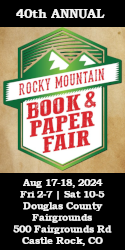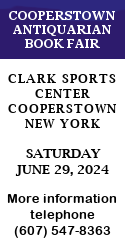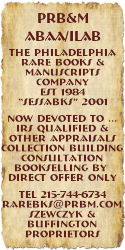“First Thus” and “Mish”
I should not have been surprised to learn recently that fewer than five million non-Turkish Americans speak Turkish: the actual number is probably under 5000. This is a pity, for it is a rich language with some very intriguing linguistic quirks. What German does for the creation of spectacular nouns (“Seeherrschafterhaltungslust” comes to mind here), Turkish does for the construction of astonishing verbs. For example, it is entirely possible to create the following verb form: “Avrupalashtirilamayabilecekler” (they may be among those who cannot be Europeanized). Far more interesting, however, is the particle “mish.” When attached to a verb or noun, it conveys two meanings: past tense and doubt. For example, “gitti’ means ‘he/she went”. “Gitmish”, on the other hand, suggests something else: “he/she went; I suppose”. As such, “mish” is a wonderfully useful addition when discussing current events: “I ran from the airplane under fire from snipers”: mish…
And so it is with first editions. There is a great deal of “mish” out there…
Many, if not most, of the books I specialize in were published in but one edition: in some cases, I wonder why they were published at all—the book Historical Researches on the Wars and Sports of the Mongols and Romans in which Elephants and Wild Beasts were Employed or Slain comes to mind here... distinguishing one edition from another is thereby not a terribly complicated matter. When occasionally forced to wander outside of this world, however, I quickly learn how tricky and subtle the world of first editions can be.
The genesis of this foray into first editions had a tedious beginning. Earlier this year, a dealer listed a copy of J.L. Burckhardt’s book, Travels in Arabia, on an auction site (“Auction Explorer”) run by Paul Mills of Clarke’s Books. The description by the dealer noted that his copy was a two-volume work, dated 1829, in octavo format, with five plates/maps. He also described it as a “first edition.” It was not, however. The first edition was also published in 1829 but in quarto format as a single volume. That belief was reinforced in the remarkable (and now standard reference) book by Shirley Howard Weber, Voyages and Travels in the Near East Made during the XIX Century—being a part of a larger Catalogue of…The Gennadius Library. Here the quarto edition is listed as the first edition (by default, however: if there was an earlier edition, Weber notes the date of the first edition). Separately, however, the bibliography for the Blackmer (1989) auction describes the octavo copy of Burckhardt as a “second edition” (number 239) and the Sotheby catalogue for the Hopkirk library auction in 1998 also describes the octavo copy (lot 682) as a second edition.
I simply assumed this was a very innocent oversight (although one that significantly affects value) and I contacted Mills about it. Mills then contacted the dealer, raising the points I had raised. To my surprise, the dealer declined to modify his description but the point was ultimately moot—the book went unsold.
This revelation was reinforced recently when I was trying to establish the general value of what I thought might be a first edition of Herman Wouk’s wonderful book, The Caine Mutiny (Doubleday, 1951). To my amazement, I encountered several descriptions as follows: “The Caine Mutiny. Herman Wouk—1st edition, 1st printing—Fine/Fine—copy of The Caine Mutiny: A Novel of World War II. 8vo. 494 pp. Facsimile Edition (emphasis added). This is a copy published by The First Edition Library in 1979.” While anything but a specialist in first editions, this struck me as intriguing and a marvelous example of “mish”. And if I thought this was simply an anomaly, I was sadly mistaken.
When writing about first editions, John Carter warned that “very, very roughly speaking, this means the first appearance of the work in question, independently, between its own covers.” Off hand, and in my innocence, that sounds quite reasonable, yet I am clearly wrong in the eyes of many. By using the “advanced search” device on the Advanced Book Exchange, and clicking on “first edition”, I learned that there are over 234 copies of Wouk’s book listed as, well, “first editions”. (Mish) In scrolling through that list, however, some astonishing versions of reality emerge. There are, of course, the paperback “first editions”, with few dealers even bothering to insert the insidious word “thus” in order to justify their flawed descriptions. Among the paperback versions of Wouk’s books are the various Doubleday editions (1951 and onward), Penguin (1958), the Pan “first paperback” edition of 1964 and various other copies in wrappers ranging from 1973 to 1983. Again, these are all described as “first editions.” Mish.
Turning to hard-bound copies, the range of “first editions” is equally strange. Well over a dozen Book of the Month Club copies are presented as first editions. Jonathan Cape of London is given as the source of the first edition (and I do not mean “first British edition”) variously for the years 1951 and 1955. The Franklin Library is the source of some “first editions” /“Limited Editions” in 1977 and 1978, while the “First Edition Library” shelled out its own “first edition” of Wouk in 1979. There is, of course, the “True First illustrated edition” of 1952 (described by one dealer as “flatsigned” and, as such, “A VERY RARE colletor’s (sic) item”. Another dealer opted for a rather different description of his copy: “Rare, almost scarce.” Quite true. All in all, there seem to be around a dozen copies of this same book, all signed, although four copies appear to belong to the same dealer using two different names. Actually, in this case, it seems that there may be two copies of this book, listed for each of the two different (though identical?) businesses. Unless, on the other hand, there is only one copy listed twice for each of the two businesses…this is confusing… The price range is also interesting: from $65 to $989. Caveat emptor.
But why limit ourselves to Wouk? While known for two marvelous travel narratives in the early
19th century, the British diplomat James Justinian Morier (1780-1849) is more famed for the creation of a splendid character: Hajji Baba of Ispahan. The Adventures of Hajji Baba of Ispahan was first published in 1824 as a “triple decker” but searching for that first edition will yield between 75 to 80 such copies, depending on the vagaries of the market. Unfortunately, only one or two date from 1824. Other dates for the “first edition” offer an amazing chronological range: 1835, 1895, 1897, 1902, 1923, 1925, 1937, 1949, 1954, and 1975. 1976, I learned, is the most recent “first edition” for Morier’s character. Mish.
There is one author whose first editions are important for me: the extraordinary 20 volume series of books by Patrick O’Brian describing the adventures of Jack Aubrey and Stephen Maturin in the Royal British Navy during the Napoleonic wars. The first edition of the first book in the series, Master and Commander, was published by Lippincott in 1969: the British edition (Collins) followed in 1970 (in view of the subject, I find this absolutely bizarre). Around 70+ copies rate as first editions and of these around a dozen are, in fact, first editions ranging in price from $65 (exlib) to $750 (exlib…!). What of the others? There is the Norton first (1994), the 1998 “first uniform edition” (ah, uniforms…perhaps olive drab…), the 2007 first “Collector’s edition”: there is also the “Movie tie-in edition” (I couldn’t make this stuff up…) and… “first edition” audio cassettes…My personal favorite reads as follows: “Sixth impression of the 1990 trade paperback reissue of the 1969 Lippincott first edition.” That certainly is a first. More mish. Or mush.
It would be fair to argue that neither Morier nor O’Brian are extremely well-known authors: it would be reasonable to suggest, therefore, that many dealers in perfect innocence might fail to realize that a book published a century after Morier’s death would probably not be a first edition. That argument begins to unravel, however, if applied to a famous author such as Dickens (Charles, that is) Surely no one in their right mind would have the temerity to feign ignorance and assert that a work by Dickens published in 1970, a century after his death, could conceivably be a first edition. We must think again on this: over 1300 books by Dickens published after 1970 are described as “first editions”. Go back further and you will receive information on over 6300 copies of books by Dickens, all described by the sellers as “first editions”. Included among these are editions by Bantam, Konemann, Ladybird Children’s Classics, Penguin, Wordsworth Classics, Signet Classics, the “TV Tie-in edition”, Readers Digest, Stepping Stone, Everyman, Wishbone Classics…you get the picture. All in all, barely one-tenth of one percent of these copies are first editions.
I strongly doubt that many colleagues are deliberately trying to swindle, misinform or cheat potential customers: it would surely be a short road to ruin by any professional standard. More often than not, it seems that many dealers simply do not have the time (or interest?) to determine exactly what they have. That would be a fairly benign practice save for one principle: books should not be described as “first editions” until all other possibilities are exhausted. At the same time, this haphazard approach to “first editions” strikes me as careless at best and cynical at worst. If one truly regards a “sixth impression of the 1990 trade paperback reissue…of…” as a type of first edition, then why not regard the 13th printing of a book’s fourth edition as simply another “first-thus”?
Off hand, the phrase “first thus” should, in my view, be carefully wrapped up and dropped in the nearest shredder: in effect, it can be applied to any and all editions of a book, a fact that simply creates confusion and mental indigestion. The same doubt may also be created by the phrase “true first” (a symbolic sign of repetitive redundancy). “First edition” versus “true first” reminds me of the friction between virgin olive oil and extra virgin olive oil: the former is chaste while the latter has not even heard of sex. The condition of both, whatever the attitude, remains the same.
And yet, of course, there are the oddballs. Some well-known works first appeared in periodicals ( Hemingway and Arthur Conan Doyle). There are, moreover, other curiosities: some Arabic books were published in the margins (!) of other books, but they too can be explained via a description or used as fodder for ardent bibliographers. All in all, however, such problems are few in number when weighed against the millions of books printed in a straightforward manner.
Does any of this matter? It certainly does for specialists in first editions, be they dealers or collectors. Such individuals will normally have the experience and knowledge to quickly cut through the chaff to obtain that morsel designed to quell their bibliophilic cravings. Most people, however, do not fall into either of those categories but they still may wish to obtain a first edition of a prized book for any number of good reasons. It hurts the trade (and reputations) when a dealer mislabels a book and then has to confront a truly outraged customer demanding his or her money back. How often have any of us heard a potential customer say ‘Well, I am a little nervous because of this other dealer who said…..”
Ignorance of the law is a weak defense in court and, I believe, that principle should apply to the book trade. To list a book, either on the Internet or in a catalogue, is a positive act: you must enter that fact into whatever listing you employ and it is therefore a conscious act, not an innocent act of a computer “defaulting” to include that category automatically. If sheer volume precludes someone from researching a book’s history, then so be it; accept that fact but do not assume that it is a first edition simply because you have never seen the title before.
And yet, sometimes a sense of humor is useful. Type in “William Shakespeare”, “first edition” and “signed”: you will discover over 100 copies: none are first editions or signed but, well, several are quite inexpensive. And as for the Book of Books, just try signed first editions of the Holy Bible…there are 20 out there. Charlton Heston, alas, is no longer with us: who but he could have verified the writing?
Amen.
Michael M. Pixley served for 22 years as a Foreign Service Officer in the U.S. Department of State, with 17 of those years overseas, primarily in Turkey and Iraq. He began his modest second career as a bookseller (Eastern Approaches Books, Annapolis, MD) in 1999, specializing in the Middle East.

























